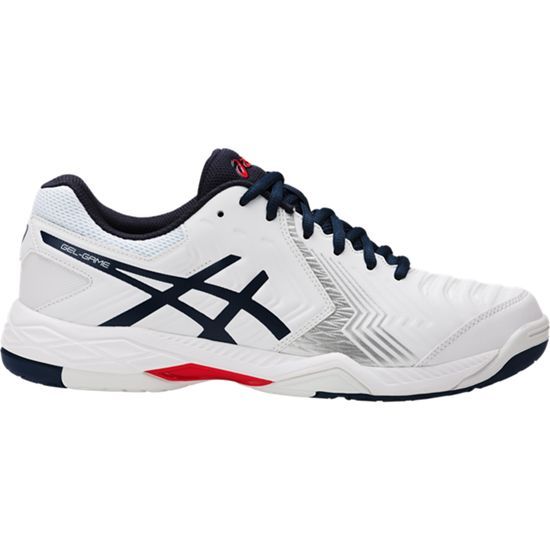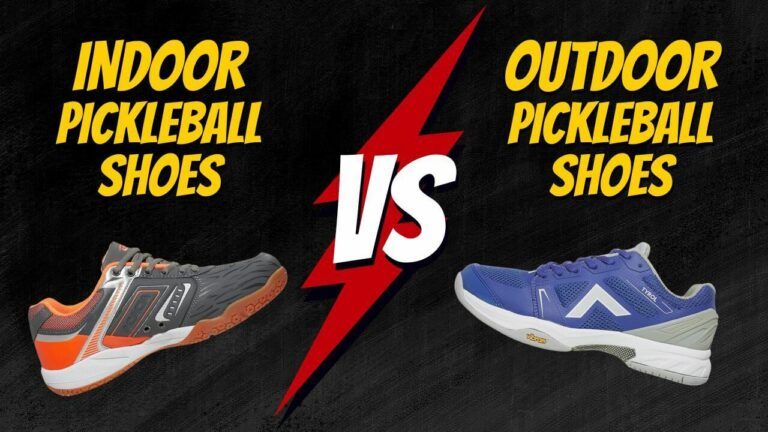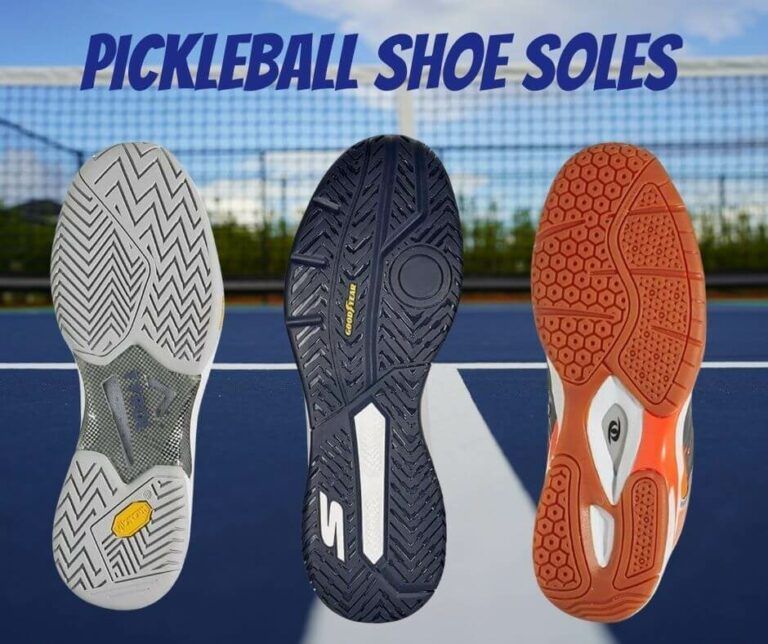Why pickleball shoes are essential
Pickleball demands a unique blend of speed, agility, and lateral movement. Consequently, the shoes you wear during play play a pivotal role not only in your performance but also in preventing injuries. Using regular running shoes can be detrimental; while they are designed for forward motion, they often lack the critical lateral support needed for the quick changes of direction that pickleball requires.

The best pickleball shoes enhance your game, allowing for improved speed, stability, and comfort. They can help absorb impact, provide traction, and promote breathability key factors that contribute to a more enjoyable and effective playing experience. Moreover, shoes specifically designed for pickleball are tailored to meet the specific needs of this sport. This not only boosts performance but also safeguards against common injuries associated with poor footwear. Transitioning from typical athletic shoes to specialized pickleball options can significantly enhance both your safety and enjoyment on the court.
Common misconceptions about shoe safety
Many players operate under the misconception that any athletic shoe is suitable for varying sports. However, this generalization can lead to serious consequences. For example, a study conducted by the American College of Sports Medicine showed that athletes wearing sport-specific shoes experienced fewer injuries compared to those in generic footwear. This underscores the importance of investing in the right pair of shoes for your sport making a significant difference to your overall experience.
Pickleball shoes vs. other court shoes
While it may be tempting to use other athletic shoes like tennis, squash, or badminton shoes for pickleball, it's essential to understand the subtle but important distinctions between these types of footwear. Pickleball shoes are designed to offer superior lateral support, cushioning, and traction needed specifically for the lateral movements unique to pickleball.
Comparison chart of court shoes
| Shoe Type | Lateral Support | Cushioning | Traction | Breathability | Recommended For |
|---|---|---|---|---|---|
| Pickleball Shoes | Excellent | High | Superior | Good | Best for all-around pickleball play |
| Tennis Shoes | Moderate | High | Good | Moderate | Suitable for baseline players |
| Badminton Shoes | Moderate | Moderate | Good | Very High | Best for quick movements on indoor courts |
| Squash Shoes | High | Moderate | Good | High | Ideal for fast-paced, indoor games |
The differences become more pronounced when you're on the court. The unique design of pickleball shoes allows for seamless transitions between movements, ensuring that players can pivot effectively without the risk of ankle injuries. Thus, if you're serious about your game, opting for shoes specifically tailored for pickleball will be crucial.
See more: Pickleball vs Tennis Shoes: Choosing the Right Footwear for Your Game
Decoding the pickleball court: Indoor vs. outdoor
The type of court you primarily play on indoor or outdoor significantly impacts your shoe choice. Each surface requires different features in footwear to optimize performance and safety.

Court surface impact on shoe requirements
Outdoor courts often have surfaces like asphalt or concrete, requiring shoes with tougher outsoles made from high-abrasion rubber. These materials help provide which can handle the more rugged outdoor terrain, delivering the durability and traction necessary for quick movements.
Conversely, indoor courts typically feature surfaces like wood or synthetic composites, necessitating shoes with softer rubber outsoles. This softer material aids in providing the right grip without causing scuff marks on the surface, allowing for excellent performance during play without damaging the court.
- Outdoor Shoes: Look for durable materials, solid traction, and increased cushioning to handle rough surfaces.
- Indoor Shoes: Prioritize grip and lightness to facilitate quick changes of direction and prevent court damage.
By selecting the appropriate footwear for your primary playing environment, you will improve not only your performance but also the longevity of your equipment.
See more: Indoor vs Outdoor Pickleball Shoes
Must-have features: Breaking down pickleball shoe anatomy
Understanding the essential components of a good pair of pickleball shoes can help you make informed choices. Consider the following features to look for as you navigate your options.
Lateral support and stability
An essential feature of pickleball shoes is their lateral support. Reinforced sidewalls and a sturdy construction can minimize the risk of ankle rolls during those rapid side-to-side movements. A shoe that hugs the midfoot well provides necessary stability, making it a foundation upon which you can launch into your next shot without hesitation.
Cushioning
Cushioning acts as a shock absorber in your footwear, helping to protect your feet and joints from the impact of constant movement. Different technologies, such as gel, air, or foam, are used to create effective cushioning systems in shoes. Gel cushioning, for instance, provides excellent impact protection, reducing fatigue during extended play, while air cushioning can enhance responsiveness, making your movements feel effortless.
Traction
The outsole tread patterns are crucial for providing necessary grip on the court. Different tread designs, including herringbone and multidirectional patterns, cater to the varying needs of indoor and outdoor play. A good pickleball shoe should ensure that you can pivot quickly without slipping, maintaining balance as you dart across the court.

Durability
Durability is another important factor, particularly for avid players who put their shoes through rigorous use. Wear and tear on outsoles and uppers can significantly reduce lifespan, especially if the materials are not robust. Opting for shoes built with durable materials, reinforced toes, and high-quality constructions can prolong the life of your investment.
Breathability
Breathability ensures that your feet stay comfortable during long sessions on the court. Shoes made from moisture-wicking fabrics and featuring mesh designs can keep your feet dry, preventing overheating or excessive sweating, which could lead to discomfort or health issues.
Weight
The weight of your shoes can have a significant impact on your performance. Lightweight shoes typically provide agility and speed, allowing for quick movements. However, additional weight often translates to added support and stability. It's essential to find a balance that suits your playing style and preferences.
Finding your Cinderella fit: A guide to shoe sizing
A perfect fit is as crucial as the features of the shoe itself. No matter how advanced a shoe's technology may be, if it doesn’t fit properly, its effectiveness diminishes dramatically. Therefore, measuring and understanding your feet is a critical step in choosing the right pickleball shoes.
Measuring your feet
Accurate measurements consist of both length and width. An easy method to accomplish this is:
- Trace your foot: Place a piece of paper on the floor and stand on it. Trace around your foot.
- Measure the patterns: Use a ruler to measure the length from the heel to the longest toe and the width at the widest part of your foot.
- Use a size chart: Consult a printable size chart or utilize online resources to find the best size based on your measurements.
This simple process will help you determine the right size, ensuring comfort and minimizing the risk of blisters.
Understanding fit factors
Fit factors such as heel lockdown, toe box space, arch support, and foot volume all play vital roles. Heel lockdown is crucial in securing the foot, preventing it from moving inside the shoe while performing lateral movements. Additionally, toe box space matters to avoid cramping, especially during prolonged play. Adequate arch support can further enhance your comfort during games. Consider these aspects carefully when trying on shoes to achieve the ideal fit.
Match your game, match your shoes: Styles and needs
Your individual playing style should heavily influence your shoe selection. Analyzing your movements, patterns, and overall game strategy can help you determine your ideal footwear characteristics.
Analyzing your playing style
Players typically fall into three broad categories: aggressive, defensive, or all-court. Each group has unique demands from their footwear:
- Aggressive Players: These individuals rely on speed and sudden movement changes. As such, they prioritize lightweight shoes with exceptional lateral support and cushioning to facilitate rapid footwork.
- Defensive Players: They focus on control and strategic movements. Thus, their shoes might lean towards stability and durability over sheer speed.
- All-Court Players: With varied movements, these players benefit from versatile shoes that provide a balance of support, cushioning, and traction in various playing scenarios.
Choosing shoes for your style
Selecting shoes based on your playing style can have a direct impact on your performance. For aggressive players, opting for lightweight shoes with excellent lateral support is crucial, while defensive players might find greater success with shoes that offer stability and durability. The most effective footwear enhances performance, increases comfort, and reduces the likelihood of injury by aligning with your specific playing needs.
Pickleball and your feet: Playing pain-free
Playing pickleball should be an enjoyable experience, but common foot problems can detract from your performance and enjoyment. Understanding these issues can help prevent them from occurring.
Common pickleball foot problems
Athletes in the sport often experience various foot problems, such as plantar fasciitis, blisters, and metatarsalgia. These injuries often stem from the repetitive nature of the sport and improper footwear.
- Plantar Fasciitis: A common injury resulting from overuse, this condition can lead to severe heel pain, affecting mobility.
- Blisters: Caused by friction between the foot and the shoe, improper fit or material can lead to these painful irritations.
- Ankle Pain: Improper lateral support or an ill-fitted shoe can result in instability, leading to sprains or strains.
The role of shoes
Properly designed shoes can mitigate these conditions through their supporting structures. Selecting shoes with adequate support, cushioning, fit, and traction is essential for injury prevention and injury management. Seeking advice from podiatrists or sports medicine professionals can also provide insights into how to care for your feet during gameplay effectively.
Boost your support: Insoles for pickleball performance
Using insoles can significantly enhance the effectiveness of your pickleball shoes. High-quality insoles that provide the necessary arch support and cushioning can play a crucial role in your comfort and performance.
Types of insoles
Different types of insoles cater to various foot needs and styles:
- Arch Support Insoles: These are specifically designed for stability and provide additional support to the arch of your foot, essential for players with flat or high arches.
- Cushioned Insoles: Offering extra padding, these insoles are beneficial for players seeking increased comfort to reduce foot fatigue during lengthy matches.
- Custom Insoles: Tailored to individual needs, custom insoles can provide the best fit and support based on your foot structure and playing style.
Investing in quality insoles can boost your overall pickleball experience and keep your feet performing at their best.
Pickleball shoe care: Extending the life of your footwear
Proper care for your pickleball shoes can extend their longevity significantly. Understanding how to clean, dry, and store them is essential.
Practical care tips
- Cleaning: Regularly clean your shoes to remove dirt and grime build-up that can degrade materials.
- Drying: If your shoes get wet, let them air dry completely avoid exposing them to direct heat, which can warp the structure.
- Storage: Store in a cool, dry place to prevent mold growth. Consider using a shoe bag for extra protection.
- Replacement: Keep an eye on the outsole and cushioning performance as these show signs of wear. Generally, you should consider replacement after 300-500 hours of play.
By following these simple tips, you can maintain the integrity of your shoes and ensure that they continue supporting your performance on the court.
Step onto the court with confidence
Selecting the right pickleball shoes can transform your play experience, providing not only comfort and support but also elevating your performance. The benefits of choosing the right footwear extend beyond mere aesthetics; they encompass injury prevention, enhanced performance, increased confidence, and a more enjoyable playing experience.
Give yourself the best chance to excel on the court by choosing shoes that align with your specific needs and playing style.
By making an informed decision and prioritizing fit and function, you will undoubtedly step onto the court feeling invigorated, ready to conquer each game ahead. Remember, your shoes are more than just equipment; they are your partners in the game a vital element in your pickleball journey.










